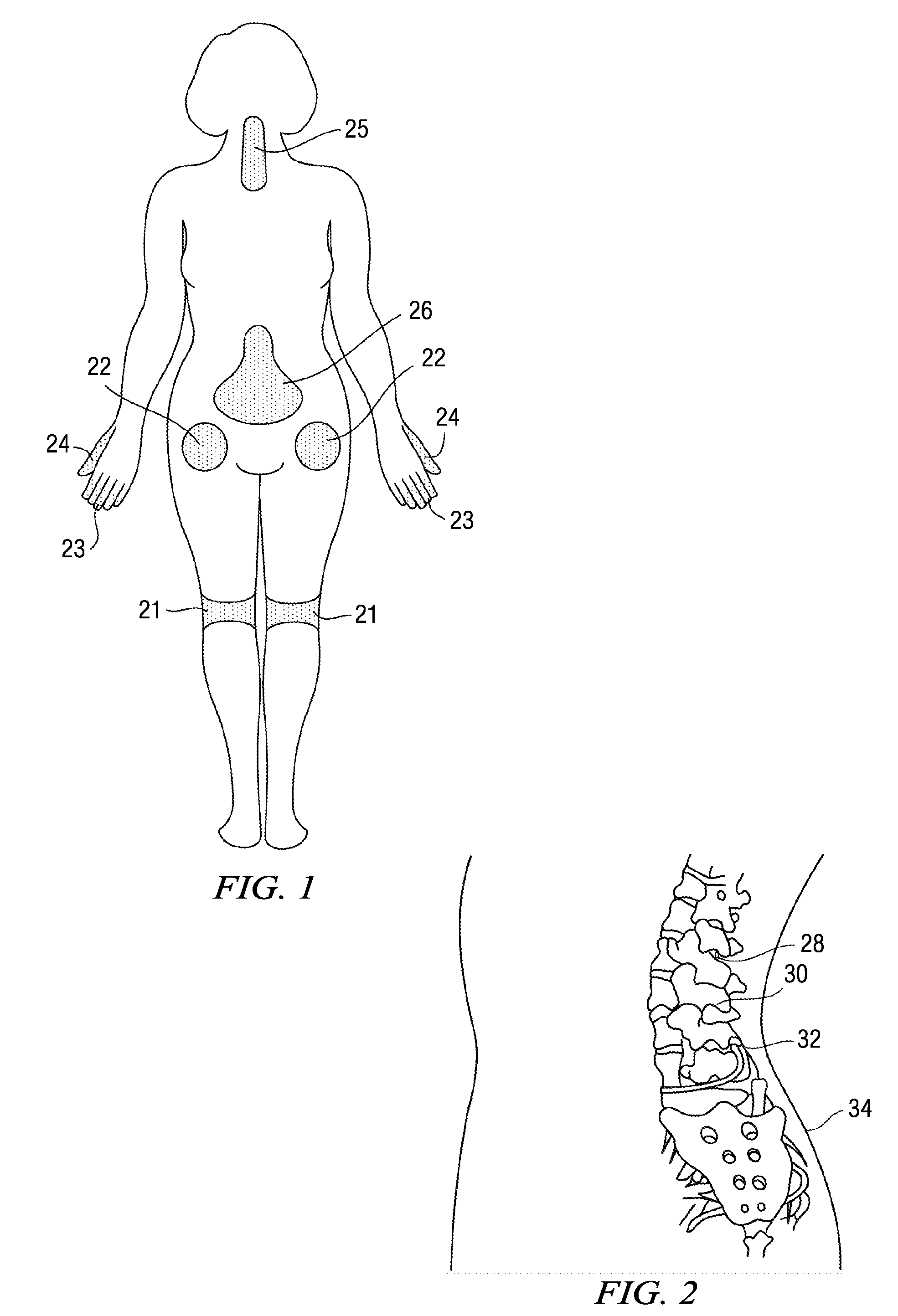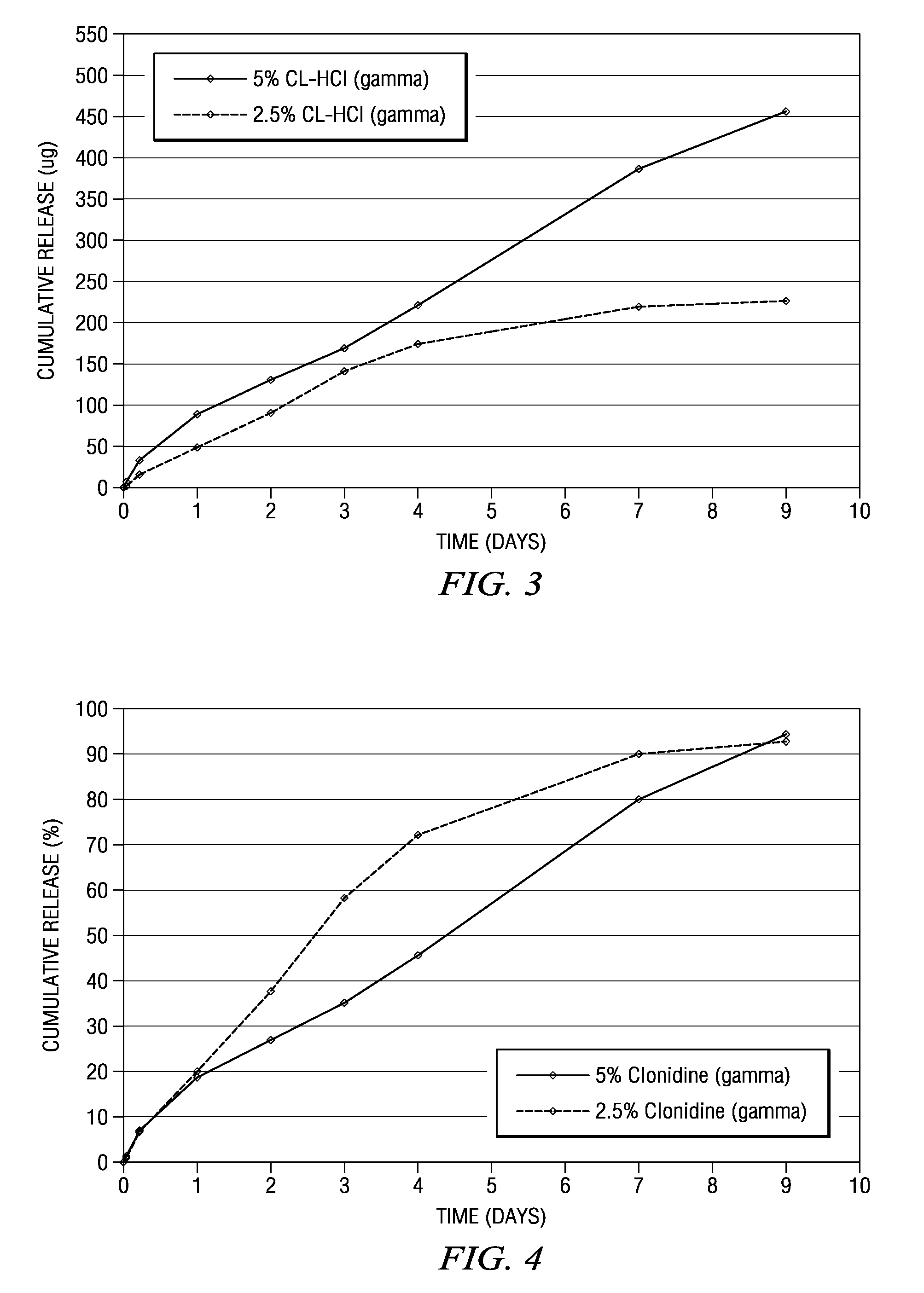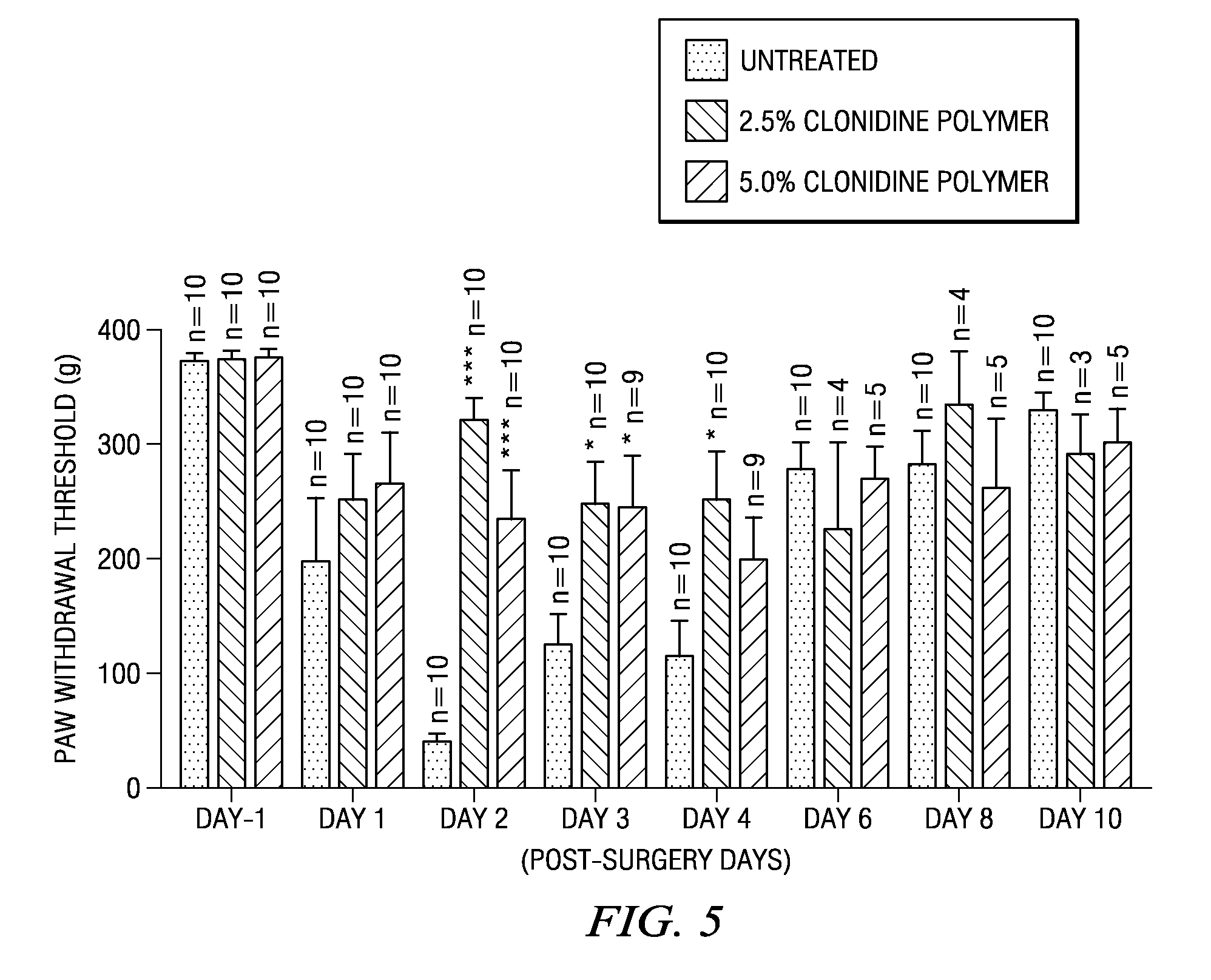Methods and compositions for treating post-operative pain comprising clonidine
a post-operative pain and composition technology, applied in the direction of drug compositions, biocide, surgery, etc., can solve the problems of reducing increasing so as to reduce the pain of the operation, prevent the effect of post-operative pain or inflammation, and facilitate the implantation of the drug depo
- Summary
- Abstract
- Description
- Claims
- Application Information
AI Technical Summary
Benefits of technology
Problems solved by technology
Method used
Image
Examples
example 1
[0168]Implants comprising clonidine were prepared according to the following procedures:
[0169]Materials: Poly(D,L-lactide-co-glycolide) having a 50:50 lactide to glycolide molar ratio (PLGA50501A), a molecular weight of 8 kDa, an intrinsic viscosity of 0.12 dL / g and acid end capped polymer chain ends was purchased from Lakeshore Biomaterials (Birmingham, Ala.). Clonidine HCl was purchased from Spectrum Chemicals (Gardena, Calif.). Methoxy polyethylene glycol (mPEG) having an average molecular weight of 550 was purchased from Sigma-Aldrich. Methanol and acetone were also purchased from Sigma-Aldrich.
[0170]Methods:
[0171]Preparation of Spray-Dried Clonidine HCl: Clonidine HCl was dissolved in methanol to yield a 12% (w / w) solution. The solution was spray-dried in a Buchi B-290 Mini Spray Dryer (Buchi Laboratorium AG, Switzerland) using a 120 kHz Sono-Tek ultrasonic nozzle (Sono-Tek Corp., Milton, N.Y.). The processing parameters were set as follows: inlet temp. (70° C.), aspirator (80%...
example 2
[0178]A number of strip or ribbon implants comprising clonidine were prepared in which the polymer type, drug load, and excipient (including some formulations in which there was no excipient) were varied. Representative formulations for the strip or ribbon implants are described below in Table 2. A number of tests were performed on these strip or ribbon implants, including in vitro release tests in which the number of micrograms released was measured, as well as the cumulative percentage release of clonidine. The results of these tests appear in FIGS. 6-13.
[0179]Materials: Poly(D,L-lactide-co-glycolide) having a 50:50 lactide to glycolide molar ratio having a molecular weight of 18 kDa, an inherent viscosity of 0.2 dL / g and acid end capped polymer chain ends (5050DLG 2A) was purchased from Lakeshore Biomaterials (Birmingham, Ala.). Poly(D,L-lactide-co-caprolactone) having a 10:90 lactide to caprolactone molar ratio, a molecular weight of 149 kDa, an inherent viscosity of 1.0 dL / g an...
example 3
[0185]Several clonidine HCl implants were prepared in which the drug load was varied. Representative formulations for the strip or ribbon implants are described below in Table 3. A number of tests were performed on the strip or ribbon implants including in vitro release tests in which the number of micrograms released was measured as well as the cumulative percentage release of clonidine. The results of these tests appear in FIG. 14.
[0186]Materials: Poly(D,L-lactide-co-glycolide) having a 50:50 lactide to glycolide molar ratio, a molecular weight of 8 kDa, an inherent viscosity of 0.12 dL / g and acid end capped polymer chain ends (5050 DLG 1A) was purchased from Lakeshore Biomaterials (Birmingham, Ala.). Clonidine HCl was purchased from Spectrum Chemicals (Gardena, Calif.). Methoxy polyethylene glycol (mPEG) having an average molecular weight of 550 was purchased from Sigma-Aldrich. Methanol and acetone were also purchased from Sigma-Aldrich.
[0187]Method of Preparation of Spray-Dried...
PUM
| Property | Measurement | Unit |
|---|---|---|
| wt. % | aaaaa | aaaaa |
| particle size | aaaaa | aaaaa |
| thickness | aaaaa | aaaaa |
Abstract
Description
Claims
Application Information
 Login to View More
Login to View More - R&D
- Intellectual Property
- Life Sciences
- Materials
- Tech Scout
- Unparalleled Data Quality
- Higher Quality Content
- 60% Fewer Hallucinations
Browse by: Latest US Patents, China's latest patents, Technical Efficacy Thesaurus, Application Domain, Technology Topic, Popular Technical Reports.
© 2025 PatSnap. All rights reserved.Legal|Privacy policy|Modern Slavery Act Transparency Statement|Sitemap|About US| Contact US: help@patsnap.com



